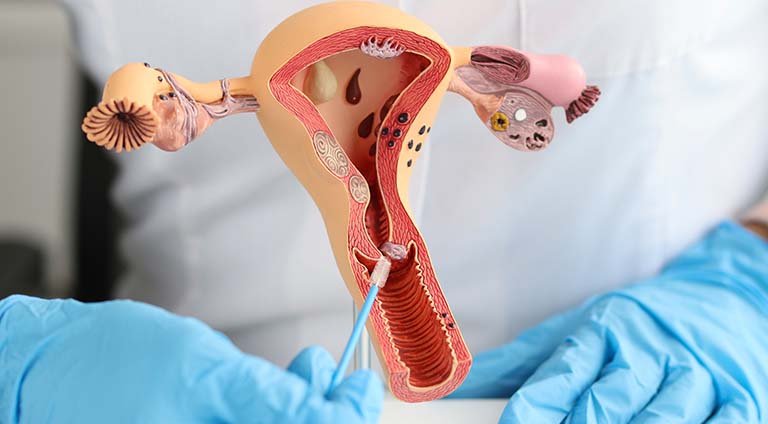Natural conception takes place when the sperm cells, after intercourse, swim up through the neck of the uterus and into the uterine tubes where they meet the egg and fertilise it. After the fertilisation of the egg in the uterine tube the egg cleaves, and after a couple of days the fertilised egg has moved down though the uterine tube and into the uterus. In the uterus the egg adheres to the endometrium and develops into a baby.
In order for this process to take place it is important that the woman produces mature eggs, has an ovulation, has passage through the uterine tubes, and that the man’s sperm quality is all right.
Ovulation
-
Hormones rise
After the egg leaves the follicle, the follicle develops into something called the corpus luteum. The corpus luteum releases a hormone that helps thicken the lining of your uterus, getting it ready for the egg. -
The egg travels to the fallopian tube
After the egg is released, it moves into the fallopian tube. It stays there for about 24 hours, waiting for a single sperm to fertilize it. All this happens, on average, about 2 weeks before your next period. -
If the egg isn't fertilized
If no sperm is around to fertilize the egg, it moves through to the uterus and disintegrates. Your hormone levels go back to normal. Your body sheds the thick lining of the uterus, and your period starts. -
Fertilization
If one sperm does make its way into the fallopian tube and burrows into the egg, it fertilizes the egg. The egg changes so that no other sperm can get in. -
Implantation: Moving to the uterus
The fertilized egg stays in the fallopian tube for about 3 to 4 days. But within 24 hours of being fertilized, it starts dividing fast into many cells. It keeps dividing as it moves slowly through the fallopian tube to the uterus. Its next job is to attach to the lining of uterus. This is called implantation.
You might notice spotting (slight bleeding) for 1 or 2 days around the time of implantation. The lining of the uterus gets thicker and the cervix is sealed by a plug of mucus. It will stay in place until the baby is ready to be born.
Within 3 weeks, the cells begin to grow as clumps, and the baby’s first nerve cells have already formed.
-
Pregnancy hormones
A pregnancy hormone known as hCG is in your blood from the time of implantation. This is the hormone detected in a pregnancy test. Some home pregnancy tests can detect hCG as soon as 7 days after ovulation.
How do you know when you’re ovulating?
- Length of menstrual cycle: For a “normal” 28-day menstrual cycle, ovulation usually starts about 14 days after the first day of your last period
- Cervical mucus: Some women may notice wetter, clearer and more slippery mucus around the time of ovulation
- Body temperature: Using a thermometer, you might be able to detect a slight increase in body temperature at the start of ovulation
- Hormones in urine: You can also use an ovulation predictor kit to measure the level of hormones in your urine, which increases around the time of ovulation.
In conclusion, natural conception is a complex yet remarkable process that involves precise timing and a series of well-coordinated events within a woman’s reproductive system. Understanding the stages of ovulation, fertilization, and implantation can provide valuable insights for those trying to conceive. By being aware of ovulation signs and maintaining reproductive health, couples can increase their chances of successful conception and the beginning of a healthy pregnancy.
If you’re planning to conceive or need more guidance, don’t hesitate to reach out to a healthcare professional for personalized advice. Your journey to parenthood is unique, and expert support can make all the difference. Contact us today to schedule a consultation and take the next step towards starting your family.




